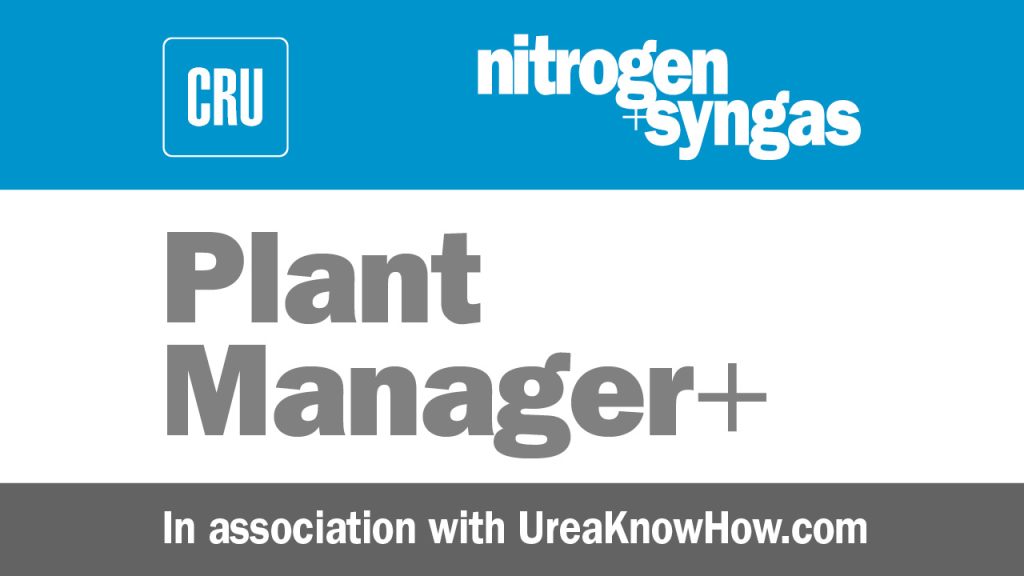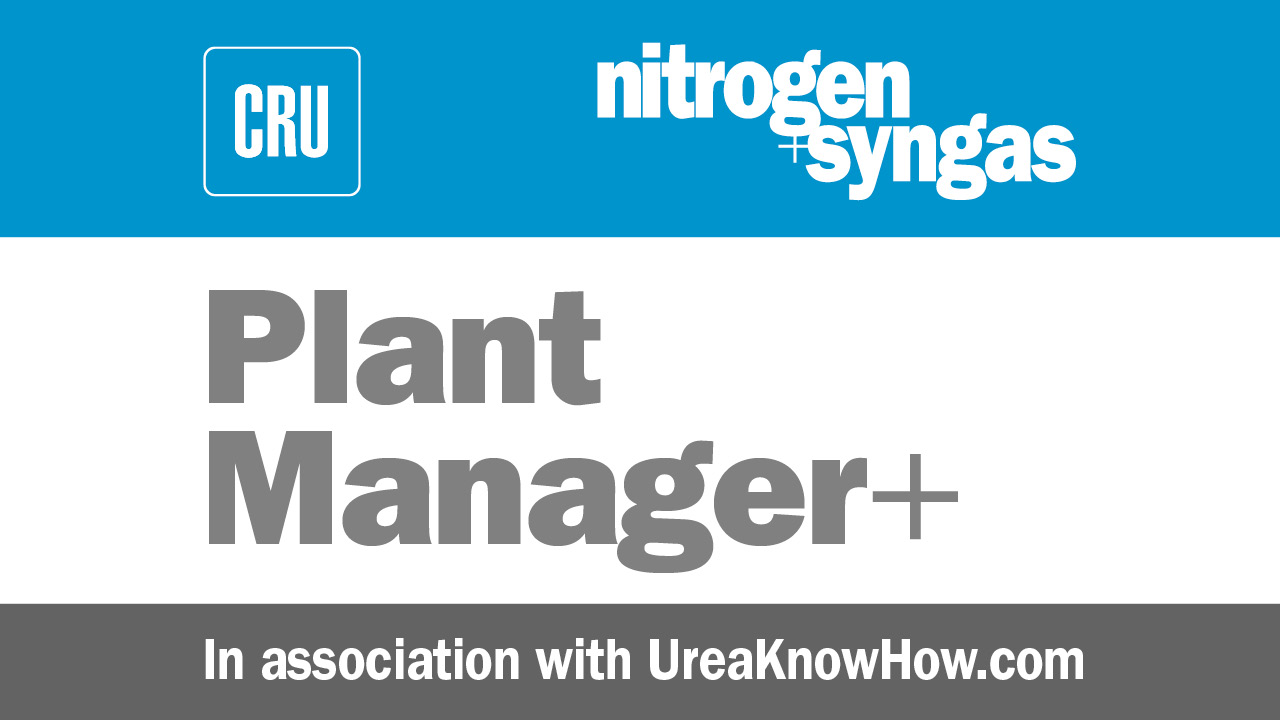Nitrogen+Syngas

7 August 2025
Problem No. 51: Restriction orifices in VOP exchangers
Vertical one pass (VOP) heat exchangers are commonly applied in urea plants. As the residence time in these heat exchangers is small, unwanted side reactions like biuret formation and hydrolysis of urea are limited. Liquid enters the tubes of the heat exchanger at the bottom side via a control valve. Due to the pressure drop over this control valve some flashing will occur. Furthermore the heat input from the shell side will also result in gas formation. The gas causes a turbulent environment at the tube side increasing the heat exchange coefficient.
Some phenomena, however, can limit or reduce the performance of these heat exchangers, for example, bad distribution of the inlet liquid/gas mixture over the tubes. Uneven feed distribution of the tubes and recirculation from the outlet to the inlet can occur limiting the performance. Another problem can be fouling on the tube side, which causes limitations of the heat exchanger.
The more turbulence on the tube side of VOP heat exchangers, the higher the heat transfer coefficient, the better the performance of the heat exchanger and the lower the risk that fouling can settle on the tube side. It is common knowledge that orifices at the inlet of the tubes improve the distribution over all the tubes, increase the turbulence on the tube side, reduce the fouling on the tube side and thus increase the performance.

Munirm Munir of Pakarab Fertilizer in Pakistan initiates the discussion: Can anyone share their experience of installation of restriction orifices in the vertical one pass (VOP) evaporation heaters (E-14, E-15 or other) in a Saipem urea plant and the reduction in biuret as a result? Please see the sketch of the vacuum and evaporation section of the plant at our site below. Will the installation of restriction orifices in VOP heaters E-14 and E-15 on the process side help us in reducing the biuret in our final product? At this time, the biuret content in our final product is 1.1 wt-%.

Prem Baboo of National Fertilizers Ltd in India replies: In our plant a control valve is provided in the steam supply to E-14 and E-15 for controlling the desired temperature of urea solution to control the biuret. In VOP heat exchangers there is a problem of flashing because the control valve is located at grade level. Afterwards a pressure drop occurs due to the two phases (gas and liquid) sometimes causing hammering in the vertical line. The orifices can provide the following advantages:
- increased logarithmic mean temperature difference (LMTD) across vertical heat exchanger;
- no flashing problem;
- regular and constant flow;
- two-phase (gas-liquid) problem will be solved;
- biuret can be controlled at constant plant load;
- unwanted side reaction can be controlled.
I have some more suggestions: The control valve can be relocated to a position closer to the vertical heat exchanger. Orifices have a fixed diameter and are suitable for constant load. For variable loads the control valve can be relocated near the vertical one pass heat exchanger.
Munirm responds: Actually, our plant mostly runs at constant load i.e. (120% of 300 t/d capacity). If the restriction orifices can help us to reduce the biuret content in the product then we can go for it.
Do you know of any reference where restriction orifices have been installed? Maybe we could get some data from them regarding their performance. The control valve (LV-22) is located down L-3
(LP decomposer holder) and it is about 100 m distance between the LV-22 and E-14 inlet. I believe you mean relocating this control valve. Will it help us to decrease biuret in our final product?
Prem replies again: If you installed the orifices before E-14 what would the function be of the upstream control valve (LV-22)? The control valve can be relocated near E-14 as shown in the figure and there is no need of an orifice. This will help to rectify the problem.
Munirm continues: Relocation of LV-22 is probably an optimal solution. At this point, the biuret in our final product is ~1.15 wt-%. Will we be able to achieve < 1 w-t% target with this modification? Do you know of any references?
Prem responds again: Yes, the relocation of the control valve is proven, but I don’t know about the orifice. We have also relocated this control valve to the vacuum section area from the LP holder.
Munirm continues: Ok, thank you. We’ll be looking to implement this at our site. In case of further queries, we’ll contact you.
Majid Mohammadian of OCI Nitrogen in the Netherlands contributes to the discussion: Restriction orifices (plugs) are installed mostly in the second stage of evaporation in the inlet of each tube which will result in an increase of the velocity, to minimise the residence time and therefore to reduce the biuret formation at high temperature and high concentration of urea melt. In Stamicarbon plants the tube diameter of the evaporator will typically be reduced to 7 mm. Please check with your licensor to decide on the diameter of the plugs.
Munirm replies: The outside diameter (OD) of the tubes of our VOPs is 3/8″. The size of the orifice is clear, but how much the biuret content will be reduced as a result of orifices in a Snamprogetti urea plant is still unclear. Can you share the performance improvement achieved at your plant after orifice installation?
Majid replies: If the OD is 3/8″ = 9.5 mm, I don’t think the restriction orifice will be effective in your case. In our case the OD was 20 mm therefore installation of orifices could increase the velocity and reduce the biuret.
Munirm continues: Our biuret content in the urea melt after the 2nd stage evaporator heater and in the prilled product is almost the same which indicates that we can’t reduce the size of the melt line to increase velocity. We also took the following measures as operational controls to minimise the residence time, temperatures and holder levels.
- The level in the MP and LP holders is kept at the minimum possible.
- The pressure drop in the vacuum section is kept at 0.3 to avoid hold up.
- The N/C ratio is kept at 3.5 (3.4-3.6) as per design.
- Stripper bottom temperature is maintained around 201°C.
- The prilling bucket urea melt temperature has been reduced to 136°C from 140°C.
- Diversion to the urea solution tank and recovery is avoided
What else can we do to reduce the biuret if restriction orifices are ruled out? Any suggestions?
Majid replies: One question: Is high biuret a recent issue or do you want to improve it to bring it below the design value?
Munirm continues: Actually, we want to improve it to bring it lower than the design value. The design value is greater than 1 wt-%.
Majid replies: As you have mentioned you have done all the required process adjustments. If you want to reduce it further to achieve lower than the design value you will have to increase the speed of urea solution/melt or reduce the distance between the pre-concentrator, evaporators and the prilling bucket.
Muhammad Kashif of SAFCO in Saudi Arabia shares his valuable experiences: Restriction orifices are used in Stamicarbon urea plants in the rectifier heater and 2nd stage evaporator heater to reduce biuret. However a better solution with respect to mechanical maintenance and reliability is to use an orifice plate with PTFE gasket.
| This series of discussions is compiled from a selection of round table topics discussed on the UreaKnowHow.com website. UreaKnowHow.com promotes the exchange of technical information to improve the performance and safety of urea plants. A wide range of round table discussions take place in the field of process design, operations, mechanical issues, maintenance, inspection, safety, environmental concerns, and product quality for urea, ammonia, nitric acid and other fertilizers. |


